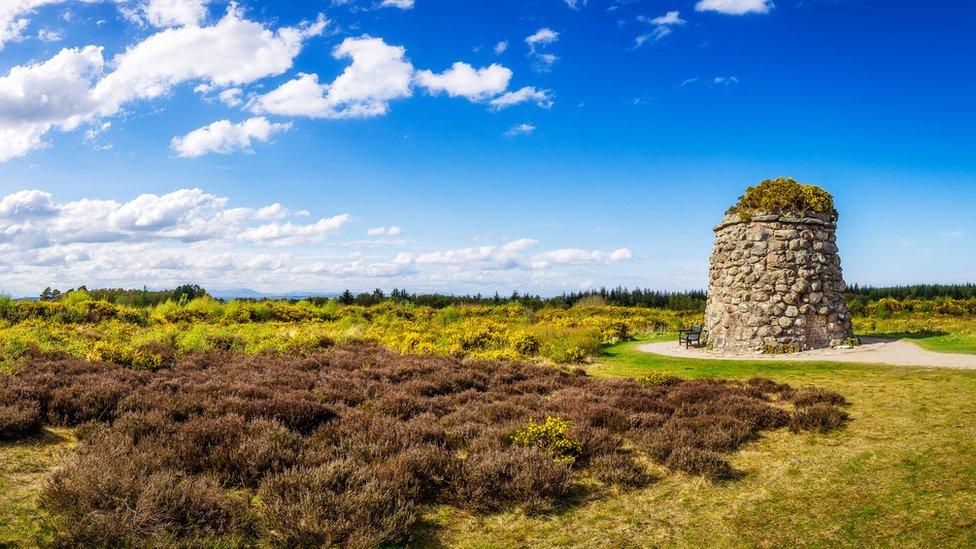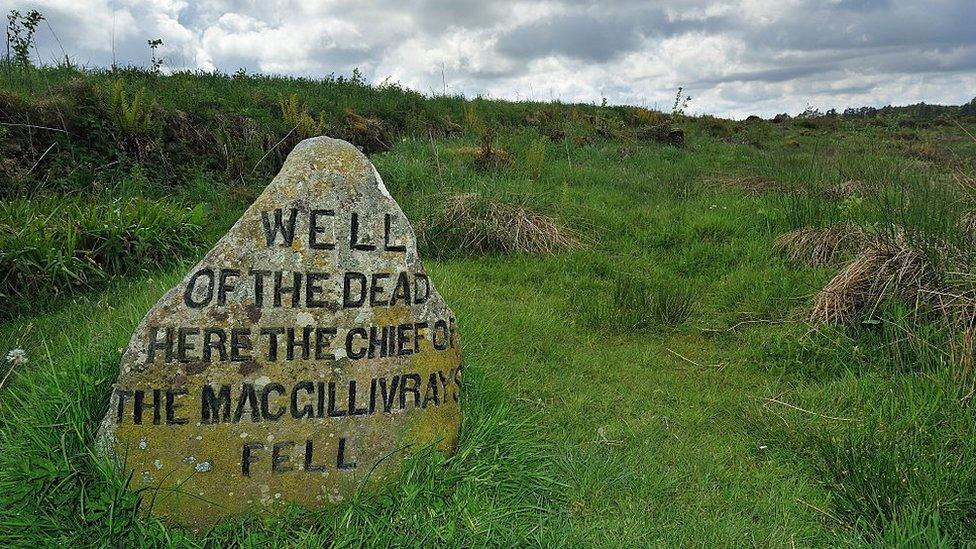Culloden battle finds could be unearthed by school build
- Published

Culloden Battlefield is south of the school site
Work to build a new school could potentially uncover new archaeological finds from the Battle of Culloden.
Highland Council has proposed constructing a new Culloden Academy and sports facilities on a site near the existing secondary school.
The battle on 16 April 1746 saw forces loyal to Bonnie Prince Charlie defeated by the Duke of Cumberland's government army.
The academy is north of where the majority of the fighting took place.
But archaeology connected with the battle has been found in the wider area.
In planning documents for the new school, Highland Council said: "There are no scheduled ancient monuments, listed buildings or conservation areas within the application site.
"However, significant archaeological deposits and sites are known in the wider area and as such, the development location is considered to have moderate archaeological potential."
Culloden saw the deaths of about 1,600 men - 1,500 of them Jacobites.
The battle ended Prince Charles Edward Stuart's campaign to regain the Great British throne for his father.
The prince escaped from the battlefield, which is near Inverness, and died in Rome in 1788.
Government troops
Last year, two lead musket balls - one showing signs of impact - were among finds made in new archaeological digs at Culloden Battlefield.
The battle saw the defeat of Bonnie Prince Charlie's Jacobite forces by Cumberland's army.
The digs were near a site where a second line of British government troops lined up on 16 April 1746.
Archaeologists said the musket balls may have passed through, or over, the first line of government troops.
Highland Council has proposed building the new school and sports facilities, including synthetic pitches, in phases.
There have been issues with overcrowding at Culloden Academy.
The local authority said the school already had 12 temporary classrooms and planning permission had been sought for three more to "accommodate the role numbers and alleviate pressure on the existing buildings".
Related topics
- Published7 April 2021
